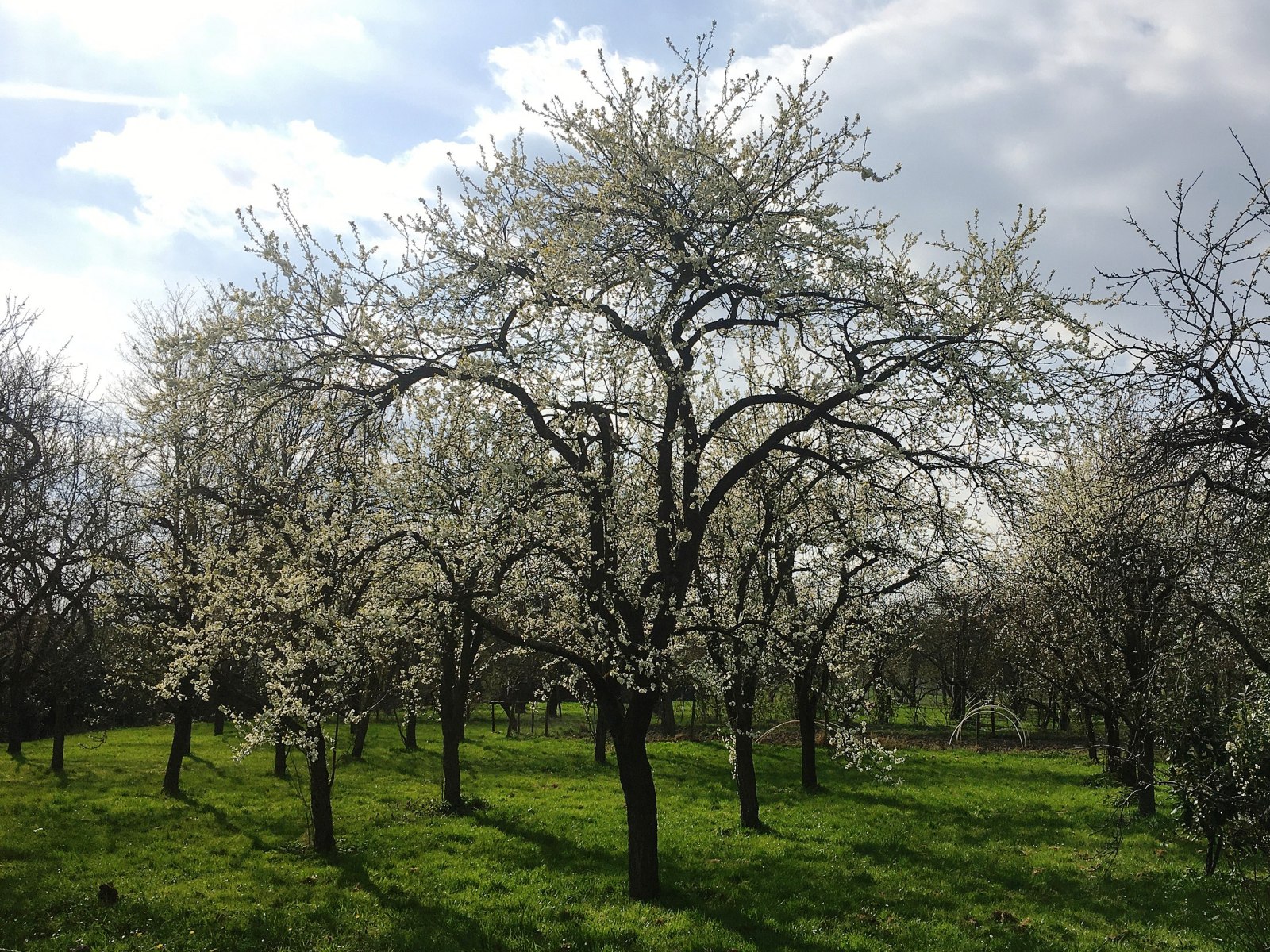Prunus domestica
Common plum
Species Tolerances
- Drought Tolerance: Medium
- Shade Tolerance: No
- Waterlogging Tolerance: Low
- Frost Tolerance (trees from warmer climates may be frost tolerant, but their flowers may not be): Yes
- RHS Hardiness: H5
- Optimum Conditions for Growth:
Small to medium sized tree, suitable for most loamy soils on sheltered sites. Acidic to neutral optimum, though no strong dependence on soil pH. - Susceptibility to Pest/Disease:
None of note at present in the UK

Prunus domestica Bemmel Lingewaard, Gelderland)/ Cultureel Gelderland/ https://creativecommons.org/publicdomain/zero/1.0/deed.en
Service to Pollinators
- Summary of Service to Pollinators:
Very good for the build up of bumble bee and honeybee colonies in spring. Total flowering time can be extended by choosing several different varieties. Honeydew also produced when aphids active. Extra-floral nectaries producing yet more nectar, - Nectar Value to Pollinators: 3 (of 0-3)
- Honeydew Value to Pollinators: 1 (of 0-3)
- Pollen Value to Bees: 3 (of 0-3)
- Flowering Period: March-Apr
Risks
- Human Toxicity: Toxic
- Livestock Toxicity: Toxic
- Invasive Risk: No
- Suckering: No
Products
- Edible Fruit: Yes
- Edible Leaves: No
- Edible Sap: No
- Edible Seeds: No
- Honey, major source in UK: Yes
- For any medicinal potential, see 'Further Details' below.
- Timber: No
- Livestock Fodder: No
- Other Products:
Utility
- Nitrogen Fixation: No
- Organic Matter Accumulation: Yes
- Phytoremediation: Yes
- Deacidification: Insufficient Data
- Windbreak: Yes
- Soil Erosion Control: Yes
- Shade or Shelter: Yes
- Plant Support: Insufficient Data
- Integrated Pest Management: Insufficient Data
- Wildlife Value: Yes
- Wildlife Value Summary:
Good for biodiversity referring to invertebrate diversity feeding on the tree, especially insects. Fruit are available to a large range of birds and mammals. - Graduated Nativeness Classification ⓘ: 2 (of 1-10)1. Historic Native
2. Historic Introduction
9. Neutral Introduction
Further Details
Medium size, adaptable to warmer climate. Extra-floral nectaries producing nectar, found either side of the leaf stalk where the petiole meets the leaf blade, of value to all pollinators. Frost at around flowering time will knock capacity to bear fruit.